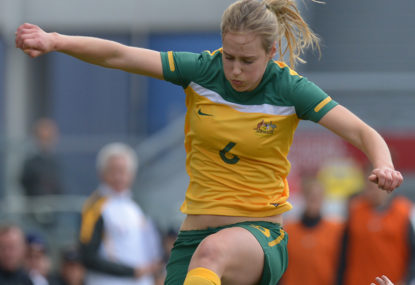“The Test is to be broadcast on Sky – a first for the women’s game – and both are aware of their roles as ambassadors for women’s sport,” gushed one national newspaper of the women’s Ashes Test last year, triumphantly.
In recent years, or even months, the coverage of women’s sport, and cricket, has skyrocketed beyond imagination. Double-page spreads of the women’s Ashes adorned national newspapers in the UK over the winter. In Australia, the domestic women’s game for the first time was regularly broadcast to hundreds of thousands on free-to-air television.
Where previously game attendance numbers were discretely concealed, or rounded up, they are now being proudly announced for all to see. We heard endlessly about the transition of the top level women from full-time amateurs to full-time professionals, and the pace at which it has occurred.
It’s a transformative time for women’s sport, and these are huge and positive steps for the game.
Yet there’s something missing.
We’re all guilty of it for it is pervasive; we’re covering the coverage, and liking what we see, but forgetting the fundamental basis of the whole thing – the sport itself. The coverage of women’s sport, and cricket, is fast becoming an opportunity for self-congratulation – a pat on the back for how far we’ve come. “Hurrah – women’s sport,” ring the headlines.
Where budgets allow, media outlets are falling over themselves to show how much they’re doing for the development of women’s sport. It’s all relative of course, and there’s much still to do to reach the level of the men’s coverage. However the fundamental flaw is that, amidst the hype, we’re forgetting to tell the public what’s happening on the pitch, not off it.
By all means mention the numbers – they’re brilliant – but that shouldn’t be the focus.
Melinda Farrell, an accomplished journalist of all sports and genders – rugby, football, cricket etc. – was recently applauded on Twitter for her efforts in promoting the women’s game. “Thanks,” replied Farrell. “I’m not promoting though. Just reporting as I would on the men’s game.”
Farrell’s is a mindset that needs to be applied more rigorously. The women’s Ashes series last year offered a turning point, of sorts. In a Test in which England were outclassed by a strong Australian unit, attention through some of the coverage started to turn to on-field performances – or the lack of them.
If England men had capitulated in the manner that their female counterparts had, the assorted press would have had a field day. A loss, after all, is far easier to romanticise and reminisce over than a win, no matter how triumphant. The men’s performance would have been torn apart, piece by piece, and analysed for weeks with a fine tooth comb.
On-field analysis of the Ashes Test was offered in some corners, but too often as an unfortunate, and perhaps unfair, comparison to the men’s game. Comparisons of the two teams on the pitch that day however, one women’s team against the other, was too few and far between.
The final of this year’s inaugural WBBL was one of the worst matches of the tournament. Compared to the high calibre of some of the preceding games the fielding was shoddy, the batting bitty and the bowling wayward – as often happens in high pressure finals situations – but it barely got a mention, for we were too busy congratulating ourselves on how well the tournament had been received.
We need to move beyond the days where the story is already written before any play takes place. It’s not just women’s cricket either. Over the last couple of seasons, the AFL Women’s Exhibition matches between the Western Bulldogs and Melbourne have created much publicity, even if just for a day. That they were taking place was something most footy fans knew. Ask them who the winner was, however, and here’s banking on a blank response. Hopefully the launch of the proposed national women’s league will fine tune its focus.
The upcoming Women’s Cricket Super League in England has been widely criticised for its timing – during the Olympics and a men’s Test match – and the lack of proposed coverage. A broadcast deal is yet to be announced, and increasingly becoming an unlikely proposition. These are all legitimate questions of course, yet not enough is being made of the on-field quality the venture proposes.
Clare Connor, head of England women’s cricket, wrote recently that 65 overseas players had applied for just 12 spots. Such an endorsement by the players themselves is unprecedented, the league is set to offer the highest quality of domestic women’s cricket yet, exceeding even that of the WBBL. That in itself should be written of far and wide, and in turn, generate an interest of its own accord.
On the international stage certainly it is professional cricket that women are now playing, and it should be covered as such. It is their job to perform, and to train for those performances, and it is the media’s job to scrutinise that. Praise where praise is due, and criticism where that too is warranted.
The players themselves acknowledge that professionalisation brings with it the good and the bad, and they welcome that. In theory, so do the media; in practice, we are yet to fully latch on.
For women’s sport to achieve real equality, it needs to be approached the same was as the men. Analyse the cricket, not the fanfare.





























































































